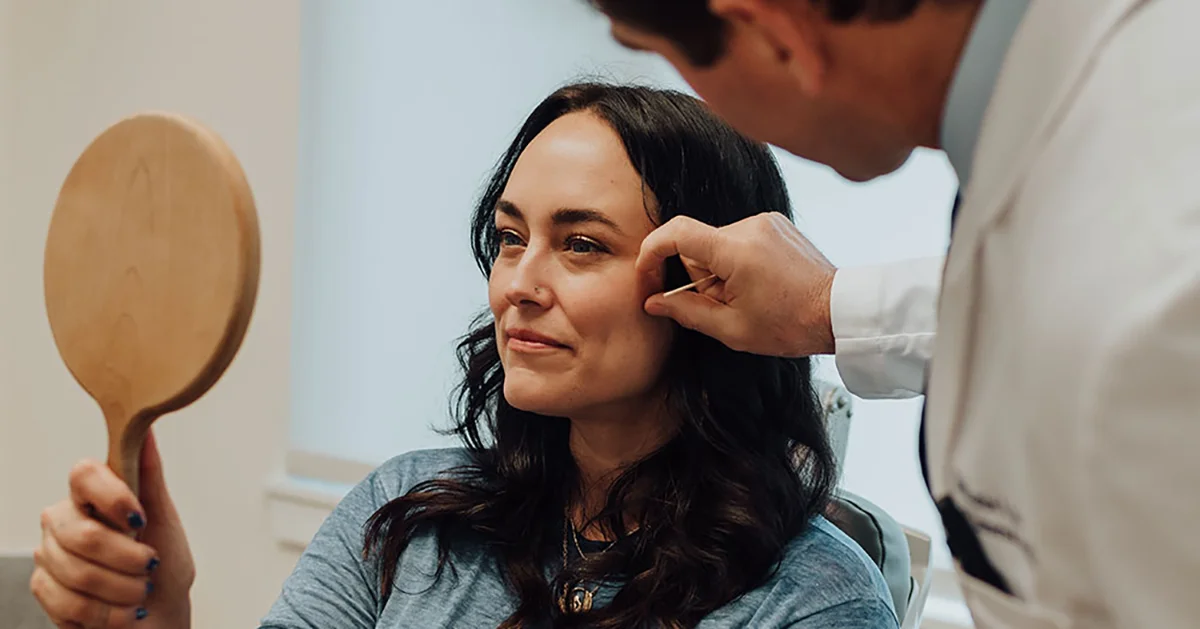After thoroughly searching social media for dermal filler before and after pictures, you are ready to move forward. Check. Now you want to know which one would be best for you. Read more and learn what injectors are looking for in a dermal filler. There are over 18 FDA-approved hyaluronic acid-based dermal fillers, so practitioners have many options in finding the right one for your specific needs. Most injectors often tend to have their favorites, ones they have garnished great results repeatedly. Interestingly, these favorites can vary from practice to practice. A few factors are at play when choosing a dermal filler for patients.
- Treatment Area
- Injection Depth
- Support Needed
- Reactions to Prior Fillers
- Longevity of the Dermal Filler
- Ease of Reversal/Dissolving
- Flow Rate/Viscosity
Dermal filler properties vary, as each is now created with specific indications in mind. This was not always the case. The first FDA-approved filler agent for cosmetic injection in the face was bovine collagen in 1981. The first hyaluronic acid dermal filler, Restylane, came in 2003. Restylane was used for many areas of the face at its inception. With time and technological advances, companies manufacturing dermal fillers have begun modifying their properties for more natural results.
Dermal Filler Properties:
- Support – known as G-prime or stiffness. Support is essential for areas of the face that need a stiffer product that will mimic the deep-laying facial structures that add overall contour and support to the face. Areas suitable for hyaluronic acid based dermal fillers with high support properties are the mid-face area (to get more lift), the area near the corners of the nostrils (nasal aperture), the corners of the lips for those who have significantly downturned lips, the temple area, and the jawline. Firmer gel textures are known to have higher support attributes. (High support HA fillers: Restylane Lift, Juvederm Voluma, Juvederm Volux, Restylane Contour, RHA4)
- Flexibility – Lips and tear troughs benefit from a more flexible dermal filler injection that is typically injected superficially and requires the ability to blend better with the tissues. Softer gel textures result in a more distributed product adding supple volume but less lift and support. (Flexible HA fillers: Restylane Kysse, Juvederm Ultra Plus, RHA 2, RHA 3)
- Cross-linking – Cross-linking is the process of chemically joining two or more molecules by a covalent bond. Dermal fillers initially were not cross-linked at their inception, and thus, their longevity was short. Today, technology proves that the higher the cross-linking, the longer the product will last. Cross-linking can make a dermal filler harder to dissolve with hylenex if needed for an unwanted result or a complication; in addition, sometimes cross-linking can cause reactions/sensitivities.
- Hyaluronic Acid Concentration – Hyaluronic acid per mL varies across dermal fillers. Dermal fillers with a higher hyaluronic acid concentration draw more water to the tissue, adding more volume and hydration. Juvederm Ultra Plus is known for this and is often used in the lips because of that property. Some areas of the face do not benefit from water being drawn to the site, such as the tear troughs.
Dermal Fillers by Manufacturer:
- Galderma Dermal Fillers (the makers of Dysport): Restylane-L, Restylane Silk, Restylane Kiss, Restylane Defyne, Restylane Refyne, Restylane Countour, Restylane Lyft
- Juvederm Dermal Fillers (the makers of Botox): Juvederm Voluma, Juvederm Vobella, Juvederm Vollure, Juvederm Ultra, Juvederm Ultra Plus, Juvederm Volux,
- Revance Dermal Fillers (the makers of Daxxify): RHA Redensity, RHA2, RHA3, RHA4
- Merz Dermal Fillers: Bolotero Balance (the makers of Xeomin)
- Revanesse Dermal Fillers: Revanesse Lips+, Revanesse Versa
Hyaluronic acid dermal fillers are a superior treatment for nonsurgical facial rejuvenation. Understanding their properties and placement depths is crucial to natural results, safety, and efficacy. Dr. Nathaniel Brigham, MD, of Aluma, stays current on dermal filler research and technical skills to provide patients with optimal dermal filler outcomes and natural results. If you are looking for dermal fillers in Portland, OR, book your appointment today at Aluma Aesthetic Medicine. Resources: Rod J. Rohrich, Erica L. Bartlett, MD, and Erez Dayan, MD, Practical Approach and Safety

